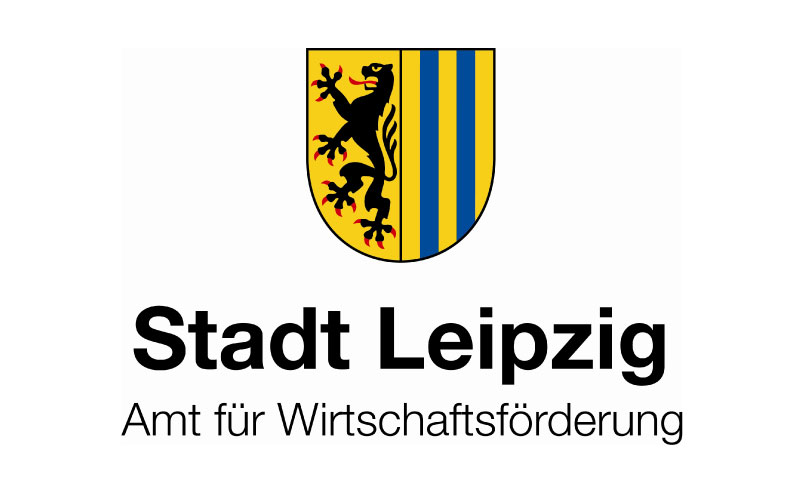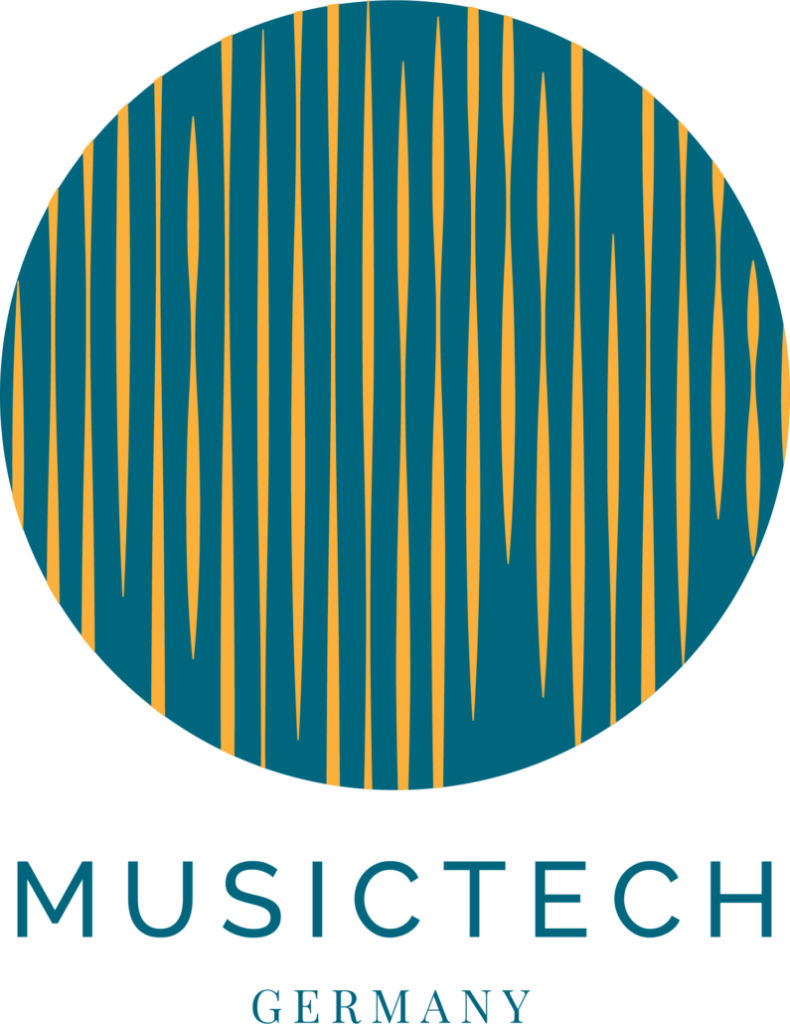Raum & Klang
Spatial Audio Network Conference
19. & 20. June 25
ZiMMT invites to the RAUM+KLANG conference. Meet leading experts, pioneers and visionaries to rethink the future of immersive audio technologies and set groundbreaking impulses.
RAUM+KLANG combines knowledge transfer and networking at the interface of music technology, audio engineering, XR development and cultural industries – from live music and club culture to the performing arts.
RAUM+KLANG connects local players with international partners to promote interdisciplinary exchange and jointly set new standards in the world of immersive audio technologies.
Program
Over the course of two days, we can expect exciting expert contributions, demos and
listening sessions. We look forward to inspiring talks, lively discussions and exciting conversations!
The conference language is English.
19. June
Spatial Audio Fields
09:00 • arrival / check in / say hi
10:00 • Introduction • Jakob Gruhl & Felix Deufel
In Leipzig, we are part of a still small but growing industry for music and audio technology. We therefore see a special responsibility in the transfer of knowledge between researchers, developers and users. As the initiators of the network projects Spatial Audio Network Germany and Europe, personal discussions with our partners and colleagues are particularly important to us. We see the combination of artistic research and practice with technical innovation as a unity – in software, hardware, studio, live and exhibition setups. With this in mind, we have brought together a broad spectrum of experts, while at the same time networking local and international players. We look forward to welcoming all participants to the first Spatial Audio Conference at ZiMMT.
10:15 • Listening Session • spaes (archiv)
10:30 • Soundjack - a low latency streaming solution (with Live demo) • Alexander Carôt
Soundjack is a low-latency communication system developed through ongoing research and development. It enables real-time audio streaming in both peer-to-peer and server-based modes. Depending on factors such as physical distance, network capacity, current internet conditions, and routing, Soundjack allows for real-time — or at least musically viable — remote interaction. As such, it is widely used for online music-making, enabling musicians and vocalists to rehearse or perform together as if they were in the same room. Soundjack is now getting ready for spatial audio use cases, such as streaming multichannel and sending positioning data via OSC. In this session, Alexander Carôt will present the latest developments and future directions of Soundjack, including a live demonstration of the system in action.
11:15 • 3D Audio for Live Music: From Studio to Stage • Banu Sahin
In this talk, Banu Sahin will share her experience working with spatial audio, highlighting processes involved in creating music, designing and operating a system. Participants will explore daily practices in applying 3D audio to live performances. What aspects should artists keep in mind while composing for the third dimension? Which solutions are currently available to audio engineers for deploying immersive systems? How have immersive audio technologies influenced the way musicians perform today? This session opens up a conversation between technology and artistic practice, offering perspectives for those dealing with the creative and technical realities of immersive audio in live settings.
12:00 • Lunch & Listening
13:00 • Everything in Its Right Time: Room Enhancement Systems – A Game-Changer for Sonic Worlds • Sebastian Oeynhausen
Immersive soundscapes require optimized room acoustics. Traditional methods often reach their limits. Room enhancement systems offer an innovative solution that is transforming how sound is perceived. This talk explores why these systems are true game-changers: how they work, what advantages they offer over conventional approaches, and where they are being used – from concert halls to museum installations. Discover how this technology is reshaping sonic environments.
13:45 • Space & Sound – A Scenographic Perspective • Johannes Scherzer
How do we define sound and space in relation to one another? In my work as a sound scenographer at studio TAUCHER, through the spatial audio project MNTN, and within the interdisciplinary explorations of spæs lab, I have developed a perspective shaped by both practice and discourse. In this talk, I will share how this understanding informs my approach to designing sound in exhibitions and artificial environments—where sound is not simply added to a space but actively shapes its perception and meaning. Key aspects: sound scenography, design & communication, spatial aesthetics, spatial audio technology
14:30 • Binaural Technologies for Real-Time Audio Rendering: Theory and Practice • Konstantin Fontaine
Broad trends in augmented and virtual reality (AR/VR) audio are accompanied by a growing demand for advanced acoustic simulations that accurately reflect the properties of human auditory perception mechanisms. In this evolving landscape, the diverse and rapidly developing rendering methodologies create ambiguity regarding the optimal choice of techniques due to their inherent advantages and limitations. The presentation will therefore draw upon the fundamental principles of spatial hearing to outline the field of applied psychoacoustics by reviewing state-of-the-art methods for real-time binaural rendering, while addressing common obstacles, practical approaches, and emerging research directions.
15:15 • Perspectives on the Use of Extended Realities in Sound Art and Composition • Paul Hauptmeier
The development of music has always been interrelated with the development of technical possibilities for composition and new formats of reproduction. Although technologies like AR and VR have been around for a long time, they are currently gaining new prominence in in both every day live and professional use. This is due to new technical developments and their increasing accessibility. Today, extended realities are among those technological innovations that promise to be formative for contemporary art and music. But even though there are some great potentials for working with sound and music, it feels like auditory aspects are often just necessary byproducts and not the artistic starting point for AR/VR works. In this talk, I will discuss technical and artistic possibilities and limitations of AR/VR from an auditory perspective and reflect on existing approaches for extended reality in music and sound art.
16:00 • Listening Session ZiMMT (archiv)& Coffee Break
16:45 • Ambisonics unwrapped: debunking myths and clarifying use cases • Daniel Rudrich
As Ambisonics gains increasing popularity in both artistic and academic circles, so do the myths and misconceptions that surround it. From ambiguous assumptions about spatial resolution and decoding to misplaced expectations about real-world performance, Ambisonics is often misunderstood—sometimes to its own detriment. In this talk, we’ll take a critical yet constructive look at common myths around Ambisonics—technical and practical. Which are grounded in truth and which are just plain wrong? We’ll explore where Ambisonics truly shines, and where it might not be the right tool for the job. Whether you’re a spatial sound artist, researcher, or audio engineer, this talk aims to offer clarity, spark discussion, and encourage a more nuanced use of Ambisonics in practice.
17:30 • Spatial Clubbing – 3D Audio für den Dancefloor • Felix Deufel
3D audio is everywhere – in cinemas, studios, and immersive art festivals – yet it’s still missing from the club scene. While music is increasingly produced in 3D, DJs lack the tools and formats to bring it to the dancefloor. This is where the Spatial Clubbing research and development project comes in. In collaboration with Grapes 3D Audio Control, ZiMMT is developing a system that integrates seamlessly with standard DJ setups – CDJs, turntables, or controllers – and adds a spatial layer. A compact, intuitive controller lets DJs apply 3D effects in real time: tracks are distributed dynamically across the space, beat-synced and fully controllable without disrupting traditional workflows. The Spatial Clubbing Engine handles real-time rendering in the background, allowing DJs to focus entirely on their performance.
Successfully tested at the sens festival at ZiMMT, the system proves that immersive clubbing works – technically, artistically, and for the crowd. This talk offers insights into the concept, technology, challenges, and current development status – and calls for partners to support the next phase of the project.
18:00 • HANG OUT & CONNECT & DINNER
19:30 • Spatial Clubbing DJ Set • CIA
UK sounds and bass music: CIA brings a driving mix of garage, dubstep, UK funky, breaks and jungle to the floor.
20. June
Deep Dive
09:30 • Immersion in teaching (with live demo) • Christian Birkner & Felix Wege (HTWK Leipzig)
Multi-channel productions have been an integral part of teaching at the Faculty of Media at HTWK Leipzig for many years. We have been gaining experience with immersive audio since 2017. We test microphone setups, workflows and new technologies and incorporate them into our teaching.
In our presentation, we will talk about what we have learnt, how our way of seeing and working has changed and what projects we are currently working on.
10:15 • ADM OSC • Mathieu Delquignies
ADM-OSC is an industry initiative aimed at standardizing object-based audio data (OBA) through the implementation of the Audio Definition Model (ADM) via Open Sound Control (OSC). With the growing prevalence of immersive audio – from music streaming to broadcasting – ADM is establishing itself as a standard for metadata, such as serial ADM or ADM-BWF or XML files in the studio. The ADM-OSC working group was founded four years ago to bridge the gap between immersive live and studio environments. Today, leading developers and manufacturers are working to simplify the use of audio object metadata – in the studio, broadcast, or live. ADM-OSC is already supported by numerous audio tools, including DAWs, mixing consoles, live rendering engines, controllers, tracking systems, and media server solutions. It is used in both live and studio productions and is gaining increasing interest from technology providers. This presentation provides insights into the origins of ADM-OSC, the 1.0 specification, as well as current developments and future outlooks.
11:00 • Listening Session • 4DSOUND (archiv)
11:15 • Dome Tools - Design & view content in real time • prefrontal cortex
Why is it so complicated to stream video and audio content live into a planetarium dome? We’ve been wondering about that for a while now, which is why we developed the Dome Tools. In our talk, we explain the difference between Dome Creator and Dome Viewer, the advantages of a ‘real-time dome’ and what is exciting for audio people. By the way, the Dome Tools repository is freely available on GitHub!
12:00 • Lunch Break
13:00 • SANE Research: Evaluating spatial consitency across speaker layouts and rendering tools • Konstantin Fontaine
The spatial audio field is rapidly evolving, unlocking expansive creative territories for artists while for audiences it allows new forms of collective experiences to emerge. As compositions travel across venues and systems, questions arise about how spatial intent is preserved. This presentation draws on ongoing research within the SANE project, to explore how differences in speaker setups and rendering strategies shape spatial perception and how they can be measured. SANE is a collaborative project between artists, venues, and audio technologists, which envisions a standardized streaming infrastructure to safeguard spatial integrity.
13:45 • 4DSOUND: Play the Space as an Instrument • Poul Holleman
Poul will share the company’s philosophy and how its core ideas shaped their software design. He will demonstrate the 4DSOUND Engine, a powerful spatial sound synthesis tool made by and for artists, showing its features through clear, inspiring examples. The Engine lets users play the space like an instrument, offering a new dimension in sound creation and performance.
14:30 • Amoenus - Publishing the Unfixed: A Case for Spatial Audio Record Labels • Christian Duka (Amoenus)
Christian Duka presents Amoenus Recordings, a spatial audio label documenting immersive performances through binaural releases. Bridging event curation and archival practice, the label holds ambisonics for licensing and transcodes them to Dolby Atmos for Apple Music. This project opens up discussion around how labels can support spatial audio practices, exploring new distribution models and methods that honour the unique qualities of the medium.
15:15 • Listening Session • Amoenus (archiv)
15:30 • LEMM3D - a spatial composition toolkit (with live demo) • Martin Recker
In this lecture Martin Recker presents strategies and concepts for composition and performance with spatial audio using the software LEMM3D, developed by the artist duo Hauptmeier|Recker. LEMM3D is a software that combines multi-channel sound synthesis and spatial design in an intuitive live electronics setup. Inspired by acousmatic aesthetics and electroacoustic improvisation, LEMM3D combines sound generation and spatialisation in an innovative way. Based on IRCAM’s Spat algorithms, various DSP concepts and spatialisation methods as well as spectromorphological parameter mappings, LEMM3D enables us to unite sound and space into an expressive spatial instrument.
16:15 • Real time spatial audio with AudioKit & PHASE Engine (Apple) • Marc Andre Weibezahn (Sonic Moves)
Within the Sonic Moves software, developer Marc-André Weibezahn has created an interface between the AudioKit engine and the API PHASE (Physical Audio Spatialization Engine) developed by Apple, an engine to enable complex, dynamic audio experiences in your games and applications. Within Sonic Moves, Marc-André developed a spatial mixer that combines binaural rendering with different reverb environments and integrates Apple’s native, dynamic head tracking (e.g. with Airpods). In his presentation, he talks about the conceptual connection of the different engines and gives insights into the practical development.
Speakers
Konstantin Fontaine
Konstantin Fontaine (b.1996) is an audio technologist, programmer and sound artist, specializing in virtual acoustics, spatial audio signal processing, and sonic arts. He studied audio communication and technology at TU Berlin, where he currently holds a position as acoustical research assistant in the field of virtual environments and binaural rendering.
Mathieu Delquignies
Mathieu holds a Bachelors's degree in applied physics from Paris 7 University and Master's degree in sound engineering from ENS Louis Lumière in 2003. He has years of diverse freelance mixing and system designer experiences internationally, as well as loudspeakers, amplifiers, dsp and software products developments. He joined d&b audiotechnik in 2018 to be French application support, workshops and seminars organizer, to support new technologies and make them accessible for use in the field.
linkedin.com/in/mathieu-delquignies
Paul Hauptmeier
Paul Hauptmeier is a composer and multimedia artist based in Leipzig. He studied electroacoustic composition at the University of Music FRANZ LISZT Weimar and at the "University of California San Diego". Since 2009 he works as part of the artist duo Hauptmeier|Recker in the field of composition, sound and multimedia art. The duo is engaged in diverse domains, spanning opera, live electronic performance, radio art, electroacoustic music, and site-specific installation.
hauptmeier-recker.de
Banu Sahin
Banu Sahin has a passion for immersive audio and has been involved in a wide range of projects, from small venues to large open-air events. She has supported various artists and productions through spatial audio system design and operation. She studied Music Technologies – Audio Design at Yıldız Technical University in Istanbul and spent a year at the Institute for Computer Music and Electronic Media (ICEM) at the Folkwang University of the Arts. She later earned her Master’s degree in Music Acoustics at the Erich-Thienhaus-Institut of the Detmold University of Music.
LinkedIn-Profil von Banu Sahin
Johannes Scherzer
Johannes Scherzer studied sound at the Film University Konrad Wolf in Potsdam-Babelsberg before co-founding TAUCHER, a sound scenography studio in Berlin. His work at TAUCHER has led to several other projects, including the spæs lab for spatial aesthetics in sound Berlin, which he co-founded with Gerriet K. Sharma. He also developed MNTN – The Sound of the Mountain, a spatial sound software designed for scenographic sound projects. From time to time, he publishes a text and gives courses on sound and space.
Felix Deufel
grapes-3d.com
notanumber.space
felixdeufel.net
Martin Recker
Martin Recker is a composer, sound and multimedia artist. He is part of the internationally active artist duo ‘Hauptmeier|Recker’, with whom he has been working since 2009. Together they have realised concerts and sound installations for renowned festivals such as the Venice Biennale and the Sharjah Biennial.he studied composition with Robin Minard and Maximilian Marcoll at the HfM FRANZ LISZT Weimar and at the Sibelius Academy Helsinki with Marianne Decoster-Taivalkoski
hauptmeier-recker.de
Alexander Carôt
soundjack.eu
Christian Birkner
Felix Wege
prefrontal cortex
Marc-Andre Weibezahn
Jakob Gruhl
Sebastian Oeynhausen
Daniel Rudrich
Christian Duka
christianduka.com
amoenus.co.uk
Poul Holleman
We’re aware that the conference line-up is very male-dominated this time. Due to numerous cancellations, we weren’t able to achieve even a basic level of curatorial balance. This does not reflect our values. We strongly encourage all non-male professionals working in immersive audio to get in touch with us and help us expand our network for future events of this kind.
Tickets & Location
1 day pass:
65 € regular
30 € (Students)
full conference pass:
110 € regular
55 € (Students)
Location:
ZiMMT (Center for immersive Media art, Music and Technology)
Torgauer Straße 80
04318 Leipzig / Germany





